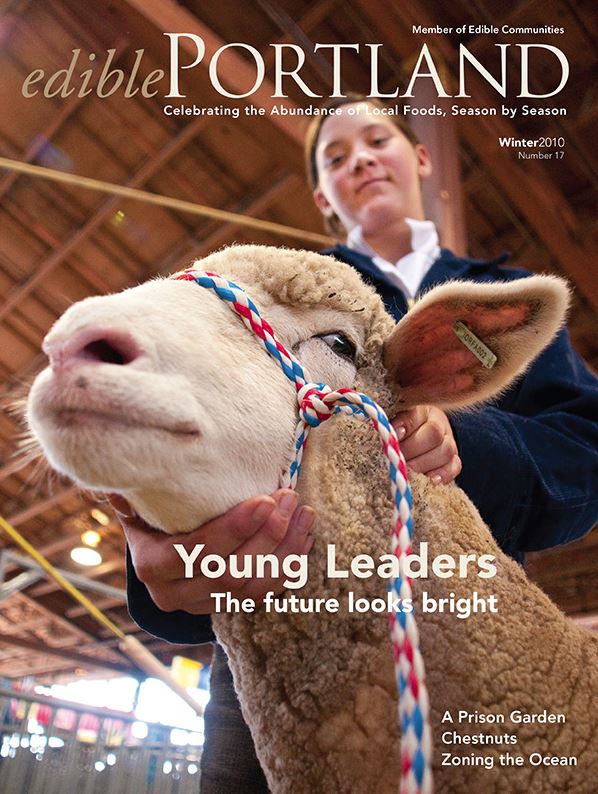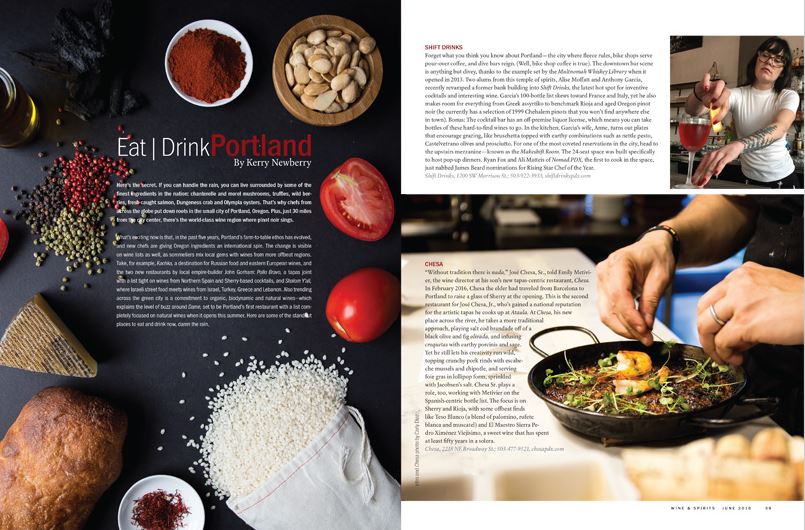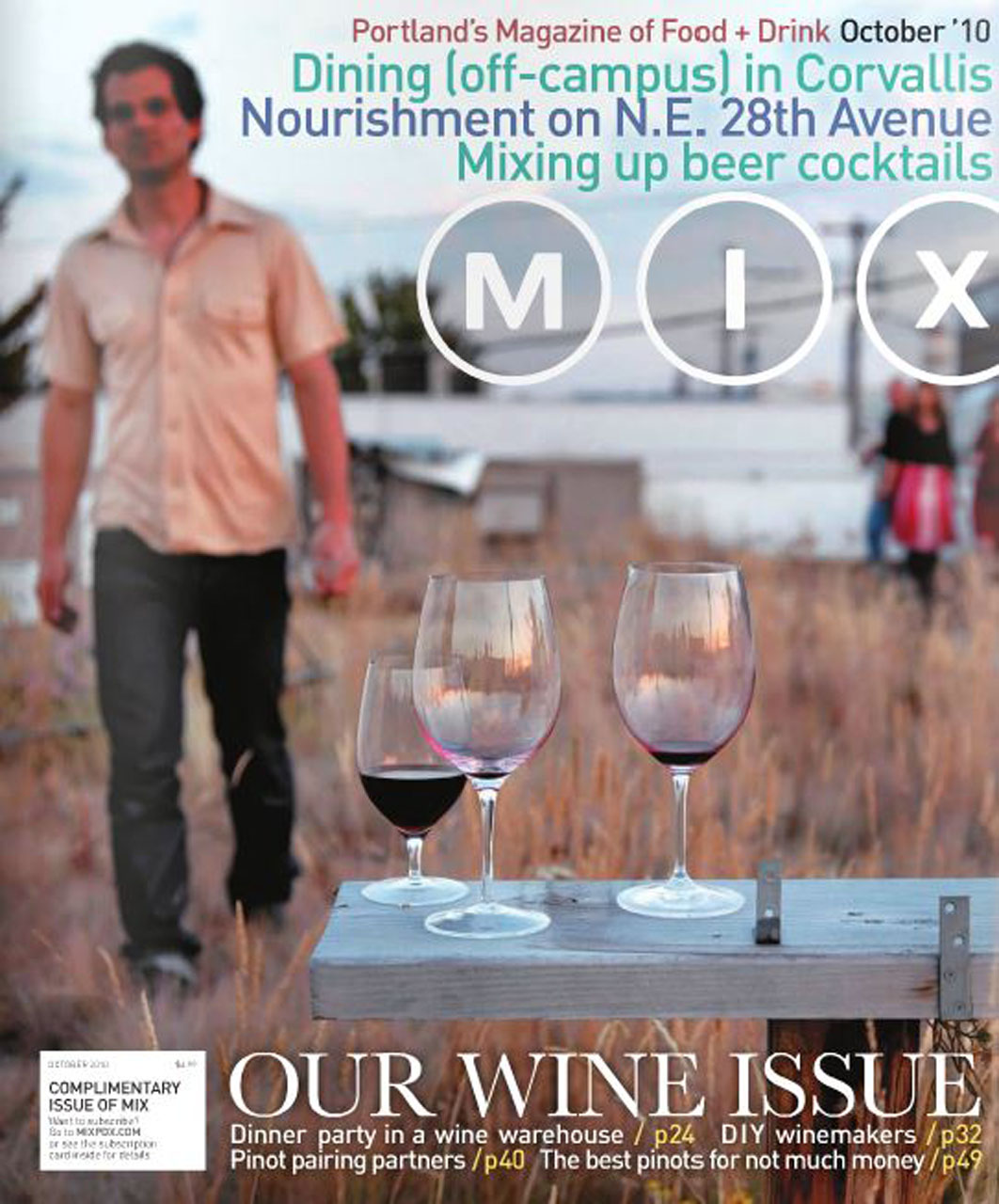Agriculture’s Bright Future

In addition to farming, FFA members study the business, science and technology of agriculture.
Four dainty feet dance in front of me. The rear end waddles back and forth like a lounge singer in a jazz club. This is not a night out on the town–it is a night at the state fair. The pig does not yet know it is cavorting its way to a cold shower. Squeals of protest soon follow, echoing in the barn like a soulful song. Pageantry for farm animals here is not unusual. All of the animals at the state fair are washed, blow- dried and primped before their debut in the arena.
A student wearing a black skirt, black nylons, black heels and a crisp, white button-down shirt under her bright blue jacket sweeps a walkway. Just above her a banner reads: “Dayton FFA—Success is Our Direction.” Three teens in ribbons and ponytails stride by, guiding snow-white, freshly fitted sheep on colorful lead rope to an arena.
A few feet away from a circle of pigs, five cows lean to the right, their faces tilted toward a giant fan blowing cool air over their one-ton bodies. Some chew cud, while others doze with eyes half-closed. Their turn for primping will come.
This is the FFA barn at the 2009 Oregon State Fair. Oregon FFA chapters send more than 200 exhibitors, from tiny towns to sprawling suburbs, to converge for one week in Salem. FFA members show their horses, beef and dairy cattle, hogs, meat and dairy goats, and sheep. The event could breed chaos, but instead, proceeds elegantly.
Gerald Hosler, president of the North Clackamas FFA, the largest and most urban chapter in Oregon, pulls out two folding chairs and turns down the transistor radio playing KUPL Country 98.7. Tall, lanky and eager, he seems like any other teen. Until he speaks. Hosler is impeccably articulate.
“The foundation of FFA is agriculture,” he says, “but the heart of the organization is growing young people and developing leadership skills.” Hosler lives on fifteen acres of land on the border of Oregon City and Clackamas. “My parents have a hobby farm and raise Herefords for themselves,” he says.
Hosler always liked animals and saw his future as a veterinarian. “When I got involved with the FFA program I switched my goals to becoming an agriculture teacher,” he says. “I really want to be involved with FFA for the rest of my life.”
Thirty-three farm boys founded the youth organization in Kansas City, Missouri more than 80 years ago, in 1928. The official name changed from “Future Farmers of America” to the “National FFA Organization” in 1988 to reflect the growth of agriculture and agricultural education, and to encompass the business, science and technology of agriculture in addition to farming.
The skills developed by FFA members reach beyond agriculture to leadership and public speaking. “The first event I competed in was free speaking,” says Hosler. He memorized the five-paragraph FFA creed and presented it. “That was the icebreaker for me.”
Each paragraph of the creed begins with “I belive.”
“The first line is ‘I believe in the future of agriculture.’” Holster cites. “This, of course, is our primary thing. And helping others–we are giving back to our communities in one way or another, either producing food or teaching the community about agriculture and where their food comes from,” says Hosler.
FFA alumnus Cindy Ettestadt has been with the North Clackamas chapter for twelve years and her two children were also in FFA. “You could survive in a school without any other classes besides agriculture,” says Ettestadt.
She believes that FFA programs are successful because students can immediately apply what they learn in class in the field. “When we birthed these cows,” she gestures to the cattle reclining a step away, “those kids gave the shots and drenched the navels to make sure they sealed. When they are sick, the kids take care of them. The experience offers them such a wide variety of educational realms beyond the classroom.”
Ettestadt points out the current President of the Oregon FFA Association, Sam Palacio. She explains the significance of the bright yellow crest on the back of his navy blue jacket. The outside of the crest is comprised of corn kernels because corn grows in all 50 states. The owl represents the advisor and the rising sun is the token of a new era in agriculture.
Palacio stands at the perimeter of the swine showmanship competition. He is tall, with trim dark hair, and carries himself with an easy confidence.
“The FFA has over 500,000 members across the nation,” he says. “In the state of Oregon, we have 4,600 members and 103 chapters. We want to have 5,000 members by 2010.”
“The program has a three-pronged system,” he continues, without taking a breath. “We have what our students learn in the classroom, we have the FFA part, which involves leadership skills, then we have the SAE (Supervised Agricultural Experience).”
The SAE is simply a business project. “You see all these cows here, all the hogs, the sheep—students manage these just like they would any livestock operation. They track their numbers, they track their hours, their expenses and income, and it’s just like a business.” The FFA has more than 200 exhibitors at the state fair, totaling more than $390,000 dollars in student business projects.
Palacio is one of the six state officers int he Oregon FFA Association that were elected in the spring of 2009. The officers defer their first year of college to represent the FFA. During that year, they tour Oregon three times, leading workshops for all the other chapter officers and visiting every high school in the state with an agriculture sciences program.
“Companies look for kids who have gone through FFA. They know how to introduce themselves, shake hands and have confidence in what they are doing. They get up every morning to feed their animal–they have a responsibility and are learning life skills.”
“We also attend the national convention in Indianapolis. Fifty thousand kids packed into the convention center—it’s great,” he says. “Basically, it’s a giant leadership convention.” In addition to leadership, the national and state conventions focus on speaking, self-improvement and service.
“I think a lot of people will explain that FFA is not an activity; it’s a lifestyle,” says Palacio. Jana Schiely, State Reporter for the Oregon FFA Association agrees. Schiely is from the town of Scio, population 750. She was drawn to FFA for her love of horses.
Her first competition at the state convention was the FFA Creed Speaking Contest. In this event, freshman FFA members memorize the five-paragraph creed and deliver it with their own interpretation and self-expression. “It’s like the ten commandments, but for agriculture,” says Schiely. She won.
At that point, FFA went beyond an extra-curricular activity, explains Schiely. “This is my life now.”
She is looking forward to the next tour of Oregon the officers will take. The focus will be on business and industry, or “the movers and shakers of Oregon agriculture,” as Schiely puts it. The goal of the tour is for FFA members to learn about the broad spectrum of agriculture, to study what it is to own a butcher shop, farm grass seed or run a beef production operation.
Like many students, Schiely finds the value of FFA in the diversity of skills students learn. “I never thought I would have found myself in a livestock barn, or welding or taking a course on electricity or aquaculture,” she says. “It gives you a little taste of everything.”
Competitive speaking events, such as Parliamentary Procedure and AG Issues, challenge students to think outside the box. In Ag Issues, students debate hot-button topics in local and national agriculture. One example: hunting laws and poaching.
“I want my students to walk away understanding that there’s always two sides to every issue,” says Kathy Mayfield, the Agriculture Science teacher and FFA advisor for the North Clackamas chapter. “They need to question everything that’s presented to them and analyze it before they make a decision,” she says.
Mayfield teaches on a ten-acre farm in the North Clackamas School District. It’s a distinctive place, fusing Old World agriculture with the new. The farm is anchored by the oldest working dairy barn in Clackamas County, evoking nostalgia as its bright red peak rises from a tangle of suburban homes.
The majority of Mayfield’s students, bussed in from the district’s three high schools, live in the surrounding homes and apartment complexes. “At most, two percent live in a rural area with some acreage,” she says. Despite a lack of agrarian roots, enrollment in the North Clackamas Agriculture Science program is on a steady increase.
“We’ve continually modified the curriculum to meet needs and stay current, focusing on college credits and science credits,” says Mayfield. All of the classes this year were full and at least 50 students were put on waiting lists. “There is such a strong desire on the part of the kids for this—the touch and feel of working on a farm,” she says. “We keep raising the bar and more kids keep showing up.”
It is late Saturday afternoon and the swine showmanship show is beginning. Just before entering the ring, one FFA member mists her hog with water from a spray bottle and gives the bristly hairs one last comb. Five FFA members are walking behind, in front of, and to the left and right of five rotund hogs, tapping bright orange fiberglass canes like orchestra conductors. Some hogs have spots, some are pale and one is black with a pink racing stripe. All five snort, squeal or oink gleefully.
“It’s called driving the hog,” explains Jeff Hollabough, a Newberg FFA alumnus, who stands watching the competition. “The goal is to get the hog to do a figure eight in front of the judge.” It is an intricate dance, since many hogs have an independent streak.
One hog suddenly sprints around the arena, enthusiastically kicking up hay like snow. Two men in suspenders use a giant sign to herd pigs gone wild. “The challenge, of course, is to get the pig to go where you want it,” says Hollabaugh dryly.
Hollabaugh attended California Polytechnic Institute on an FFA scholarship, and all three of his sons were in FFA. He now breeds lambs for country fair kids in Canby. Many of these kids know they will not farm, but want to go into things like Agriculture Marketing and Communications,” he says.
“Think about it,” he says. “Sunkist Headquarters is in Sherman Oaks, California—there aren’t a lot of oranges that grow there,” he says, raising an eyebrow knowingly. “These companies look for kids who have gone through FFA. They know how to introduce themselves, shake hands and have confidence in what they are doing,” he says. “They get up every morning to feed their animal—they have a responsibility and are learning life skills.”
Brett Kaysen, a faculty member at Colorado State University in the Department of Animal Sciences, judges FFA shows across the country. This summer was his fourth year judging all of the swine competitions at the Oregon State Fair. His years of experience with FFA have convinced him that there is no better youth development program in the country. “What else can you do to teach kids work ethic, discipline, decision- making, science, math, speaking skills, leadership?” he asks.
Kaysen predicts a bright future in agriculture because there is a need. “If you study any of the research data that is good science, it’s telling us that 35 years from now we are going to be faced with a global food crisis. That alone says look at all of the opportunities in agriculture.”
The tractor competition begins early Sunday morning. A young judge peers over aviator sunglasses as students maneuver tractors the size of studio apartments backwards and onto narrow wooden blocks. His T-shirt asks: “Got Ag?”
A few feet away, a crowd oohs and aahs at a different, but just as impressive, sight. They’re peering past a barn fence to which is taped a green paper sign reading: “It’s a girl. I was born at 12:30 A.M.” A three-year-old boy in a straw hat and boots hangs from the wooden gate, eyes wide. A baby calf tries to stand.
How can you not believe in the future of agriculture?
Edible Portland | Winter 2010
Click here to read the article on the Edible Portland website http://edibleportland.com/agricultures-bright-future/.




